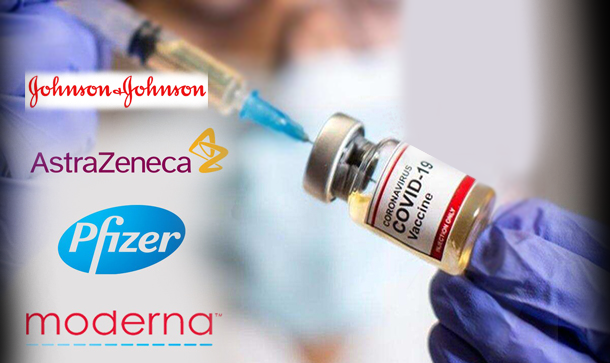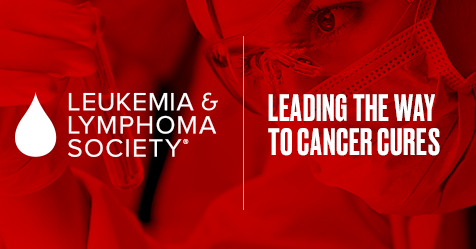
Brian Berletic
21st Century Wire
Introduction
As the COVID-19 crisis has played out for now well over a year – regardless of what anyone’s opinion might be regarding what threat the actual virus posed versus the damage done by measures to supposedly protect the public from it – the endless contradictions, missteps, manipulations, and outright lies spread by the supposed ‘experts’ and ‘healthcare professionals’ has reached mountainous heights.
From government flip-flopping over mask mandates and social distancing measures, to vaccines pushed onto the public and rushed through the regulatory approval process in record time (vaccine products that admittedly won’t prevent the contraction or spread of the virus) the only thing one can be sure of is that we aren’t being told the truth about a great many things, and that the self-appointed arbiters of this crisis cannot be trusted.
And even before the COVID-19 crisis began – those charged by Western civilization to mobilize a response already had a well-established, long-standing irrefutable track record of fraud, corruption, and criminality ranging from global bribery rackets and falsifying research and safety data, to deliberately putting dangerous (and sometimes deadly) products on the market.
Corporations involved in development and manufacturing of COVID-19 vaccines included Johnson & Johnson – a company recently implicated in selling asbestos contaminated baby powder for years – knowing it was dangerous but withholding knowledge of this danger from both regulators and the public. Despite no longer selling the tainted powder in North America, it still continues to sell it overseas, NPR in its article, “Johnson & Johnson Stops Selling Talc-Based Baby Powder In U.S. And Canada,” would note.
One might ask why Johnson & Johnson feels so confident about its otherwise criminal behavior. The answer might have something to do with the firm also being caught up in bribery scandals. One, reported on in Reuters’ 2019 article, “Exclusive: FBI targets Johnson & Johnson, Siemens, GE, Philips in Brazil graft case – sources,” would note:
The U.S. FBI is investigating corporate giants Johnson & Johnson, Siemens AG, General Electric Co and Philips for allegedly paying kickbacks as part of a scheme involving medical equipment sales in Brazil, two Brazilian investigators have told Reuters.
Brazilian prosecutors suspect the companies channeled illegal payoffs to government officials to secure contracts with public health programs across the South American country over the past two decades.
Another COVID-19 beneficiary, Pfizer, has also repeatedly been caught bribing public officials around the globe to obtain regulatory approval where the merits and necessity of their products otherwise couldn’t, as reported by the Washington Post in its 2012 article, “Pfizer agrees to pay $60M to settle foreign bribery case.”
Moderna, who up until the COVID-19 crisis had never actually brought a viable product to market, was immediately embroiled in multiple conflicts of interest and demonstrable corruption when selected to receive hundreds of millions of US dollars in funding for its vaccine candidate. CBS News reported in its 2020 article, “Watchdog urges SEC to investigate vaccine maker Moderna.”

Companies like Johnson & Johnson, Pfizer, Moderna, and others clearly expand into markets and then sidestep safety and efficacy issues through criminal practices, before receiving, at best, a few slaps on the wrist from Western regulators and law enforcement agencies. They not only remaining in business to this day, but being placed at the top of list to profit from supposed crises like COVID-19.
SEE ALSO: COVID-19: The Emergence of the Pandemic Industrial Complex
Because Western healthcare is so thoroughly corrupt and compromised – it was always difficult to ascertain credible information regarding COVID-19.
Lacking our own labs and experts to test for and determine with certainty the threat posed by COVID-19, and the claimed efficacy and safety of proposed vaccines, or treatment protocols for those already infected – meant we were given the choice of deciphering constantly contradicting narratives from so-called ‘public health’ and healthcare ‘experts’ who are largely in the pay of Big Pharma, against little to no reliable data we ourselves could verify firsthand.
Unlike a political crisis where we can personally observe protests, conflicts, and other aspects defining it – COVID-19 involved a virus invisible to our naked eye and indiscernible without sophisticated equipment and trained professionals needed to operate it.
The infrastructure and human resources required to ascertain the real threat level and actual risk of COVID-19, or any other threat to human health and effective measures to guard against them – are entirely monopolized by a transnational corporatized system we know is fundamentally and irreparably corrupt, and which is driven by the prioritizing of profits over people, and one which seems to always benefits the more the sicker we get.
This is a fundamental truth few would attempt to argue, and yet, it is common ground most people can meet on even if they have differing or opposing views regarding COVID-19 and vaccines. What would anyone on either side of that debate have to lose by creating and utilizing truly independent and fully transparent medical research and human healthcare institutions?
When considering the larger picture, this is a problem that extends far beyond COVID-19, and includes virtually all aspects of research and development regarding healthcare, treatments, and cure.
A perfect example of this is the now FDA-approved leukemia-curing CAR T-cell therapy (called “Kymriah”) developed by University of Pennsylvania researcher Dr. Carl June through funding from both the public and a charity called Leukemia & Lymphoma Society (LLS).
The first trials were described in a 2011 New York Times article titled, “An Immune System Trained to Kill Cancer,” which reported:
A year ago, when chemotherapy stopped working against his leukemia, William Ludwig signed up to be the first patient treated in a bold experiment at the University of Pennsylvania. Mr. Ludwig, then 65, a retired corrections officer from Bridgeton, N.J., felt his life draining away and thought he had nothing to lose.
Doctors removed a billion of his T-cells — a type of white blood cell that fights viruses and tumors — and gave them new genes that would program the cells to attack his cancer. Then the altered cells were dripped back into Mr. Ludwig’s veins.
Ludwig’s immune system, with its newly reprogrammed T-cells, began attacking his cancer.
The article would then note:
There was no trace of it anywhere — no leukemic cells in his blood or bone marrow, no more bulging lymph nodes on his CT scan. His doctors calculated that the treatment had killed off two pounds of cancer cells.
A year later, Mr. Ludwig is still in complete remission. Before, there were days when he could barely get out of bed; now, he plays golf and does yard work.
“I have my life back,” he said.
The trials would continue saving critically ill patients who would have otherwise died. Among these patients was 6 year old Emily Whitehead. The NYT in a 2012 article titled, “In Girl’s Last Hope, Altered Immune Cells Beat Leukemia,” reported:
The treatment very nearly killed her. But she emerged from it cancer-free, and about seven months later is still in complete remission. She is the first child and one of the first humans ever in whom new techniques have achieved a long-sought goal — giving a patient’s own immune system the lasting ability to fight cancer.
Today, nine years later, she is still cancer-free.
The treatment is nothing short of revolutionary. The techniques used to cure cancer could – with modifications and a full understanding of the genes involved, could be used for everything from permanently curing diabetes to rebuilding heart tissue damaged from cardiovascular disease.
What was even more incredible was how – even under experimental conditions – the CAR T-cell therapy was shockingly cheap – cheaper than a bone marrow transplant.
The New York Times in the same 2012 article would note:
Dr. June said that producing engineered T-cells costs about $20,000 per patient — far less than the cost of a bone-marrow transplant. Scaling up the procedure should make it even less expensive, he said, but he added, “Our costs do not include any profit margin, facility depreciation costs or other clinical care costs, and other research costs.”
The obvious implications of a single-shot permanent cure for a criminally corrupt pharmaceutical industry is virtual extinction. It would be an industry no longer able to profit from illness with permanent cures costing less than single rounds of perpetual “treatments.”
Thus, what followed next should have surprised no one.
 Pharmaceutical giant Novartis swooped in with its financial muscle and “licensed” the experimental therapy, bringing it through final clinical trials, before renaming the CAR T-cell therapy “Kymriah” and slapping a $475,000 price tag on a $20,000 therapy. This placed it well beyond the reach of patients and prevented this achievement from being built upon by others around the globe to expand the life-saving capabilities of this technology.
Pharmaceutical giant Novartis swooped in with its financial muscle and “licensed” the experimental therapy, bringing it through final clinical trials, before renaming the CAR T-cell therapy “Kymriah” and slapping a $475,000 price tag on a $20,000 therapy. This placed it well beyond the reach of patients and prevented this achievement from being built upon by others around the globe to expand the life-saving capabilities of this technology.
Worst of all, Novartis was a “partner” with the charity LLS who collected the money of ordinary people to fund this breakthrough… before handing the results over to Big Pharma. In other words – LLS and other charities like it are being used by Big Pharma to raise money under the auspices of a charitable organization who absorbs the initial risks and costs of research and development, and only intervening (and then scooping up) results once a profitable outcome is assured.
LLS and other charities could and should take the next logical step and use the money they raise to create the facilities required to bring these breakthroughs to the people who need them most – at production cost, and with the knowledge used to create them provided as open source for the entire global medical community to use. The fact that they have not, appears linked to their “partnerships” with the Big Pharma corporations regularly commandeering their work.
Finding a Solution
Creating a more transparent human healthcare system would be difficult to argue against.
Treatments, cures, and our overall understanding of human health is funded by state and charity money. Who could argue that the knowledge, tools, techniques, treatments, and cures resulting from this public funding should not then be scooped-up by corrupt, untrustworthy, strictly-for-profit corporations who wall-off these breakthroughs with “intellectual property?” Who besides the shareholders of these corrupt corporations would actually benefit?
In solving this problem, it may be instructive to draw from the successful resistance to other immensely corrupt industries. Healthcare isn’t the only industry deeply monopolized by corrupt corporations. Together with Big Pharma is big-energy, big-agriculture, big-tech, the corporate media, and many others.
The battle against each of these rackets has spanned decades with people dedicating their whole lives to not only investigating and exposing them, but creating solutions to help undermine and eliminate them.
The battle against the corporate media is a good example of this.
Decades ago, to counter the narratives of networks like the BBC or CNN one would need intensive capital, a newsroom full of reporters, a studio, cameras – all costing immense amounts of money and beyond the ability of the vast majority of the population. Today, information technology has made it possible for a single individual with minimum investment to reach thousands, tens of thousands, or even millions of people. Websites, channels, and other forms of media have given way to a thriving alternative media ecosystem – a threat that has become so serious for the entrenched monopolies of the corporate media that a variety of strategies have been devised into what is now shaping into an information war.
Big-tech has become involved – and here too we see a battle involving not only efforts to investigate and expose the stranglehold corporations like Google, Facebook, and Twitter attempt to gain over the flow of technology – but also viable alternatives to undermine and hopefully one day escape the reach of these online giants.
Big-agriculture faces a growing global movement of localized organic agriculture who are pushing back against chemical-intensive, genetically modified organisms (GMOs) and their massive lobbying and disinformation networks.
These are all abusive industries that have not only strong, well-developed political and media resistance to them – but also abusive industries that can be undermined by tangible alternatives ordinary people can play a direct role in helping expand to prevail over them.
Human healthcare is different. Big Pharma’s role in the industry, just like the media decades ago, requires capital-intensive investments to build the labs and hire the staff to do even the simplest of related activities.
The most “localized” aspects of global healthcare infrastructure would probably be universities which include facilities to not only educate students for an eventual role within the healthcare system, but also facilities dedicated to research and development.
However, universities have been significantly infiltrated by pharmaceutical corporations.
A 2020 op-ed in the BMJ (British Medical Journal) titled, “Conflict of interest in medicine: how medical students can become catalysts for change,” would note:
“I was a fifth year medical student when I attended an elective seminar at my university in Italy about “Conflict of interest in the medical profession.” The speaker described several examples of the strategies the pharmaceutical industry uses to influence policies, research, and professional practice. It was just a two hour event, but for me it was a turning point. During my clinical rotations in the following days, I started to notice the presence of pharmaceutical companies in the everyday life of health professionals—from the contact with sales representatives, to the sponsored education materials, to the pens, notebooks, and other gifts that find their way into the doctors’ office. Until that moment, these practices were completely normal to me. During my medical training no one had ever told me to question them, or told me about the effect of industry influence on healthcare.”
The author, Alice Fabbri, would introduce the Just Medicine Campaign, described as advocating, “conflict-free medical education environment,” in a bid to remove the obvious and pervasive conflict of interest reaching into medical education (and by implication, medical practice).
This malign influence shapes the minds and belief-systems of young medical researchers and practitioners, and through a system of peer-pressure aided by Big Pharma’s extensive relationship with the corporate media – maintains a well-regulated system of veneration and devotion toward so-called “scientific consensus” created by and for industry interests, not actual science or the benefit of society.
Raising awareness of this process at universities among medical students is one approach to help expose and possibly mitigate the malign influence pharmaceutical corporations have over global healthcare infrastructure and policy-making.
But it is not enough.
Technology in all other scenarios has been the great equalizer between abusive monopolies and those seeking to diminish or eliminate their hold over our lives. Technology will also by necessity need to be a key part in breaking Big Pharma’s hold over healthcare.
In the early 2000’s the do-it-yourself biology (DIYbio) movement sprung up. It focused on opening up the knowledge, tools, and techniques surrounding biotechnology. It included the creation of open source hardware like lab equipment and diagnosis tools and also open source pharmaceuticals like the still-ongoing Open Insulin project.
There were also a large number of local community labs that began springing up around the globe. Some of them are still open, but most are not.
From the very beginning big-pharma and its partners within Western governments identified and dealt swiftly with the threat of the DIYbio movement. The Federal Bureau of Investigation (FBI) quickly established a “relationship” with many of these community labs across the United States and even tried to do so overseas.
A National Institute of Health publication titled, “The FBI and biohackers: an unusual relationship,” would explain:
“In 2009, the US Federal Bureau of Investigation came knocking on the door of the biohacking community: The agency sponsored a booth and workshop at the 2009 iGEM (International Genetically Engineered Machine) competition in Cambridge, MA, USA, and stood alongside US biohacking community leaders at a FBI‐sponsored synthetic biology conference “Building Bridges Around Building Genomes” held near San Francisco in 2010. The FBI acknowledged that their presence at and sponsorship of these conferences might seem unusual, with one agent noting in his slideshow, “We’re with the U.S. Government […] and we’re here to help. Really.”
The abovementioned iGem competition had begun with an open source ethos but quickly turned into a poaching ground for large biotech and pharmaceutical corporations.
Community labs, including one of the very first, GenSpace in New York City, were approached with corporate foundation funding and were quickly guided back into the same sort of devotion to corporate-determined “scientific consensus” encouraged on university campuses around the globe.
The development of open source lab equipment and medical tools was also a central pillar of the DIYbio movement.
I personally ran a multi-year project developing open source solutions for a national children’s hospital in Bangkok, Thailand – creating custom designed solutions that were fabricated locally with 3D printers and used in place of more expensive and inflexible solutions from large biomedical companies.
The amount of money saved in just one year was enough to buy several 3D printers and – had the project been fully implemented – could have covered the cost of a full-time designer as part of the hospital’s innovation department.
The ultimate plan was to create a nationwide online network sharing open source designs in virtual 3D design warehouses like Thingiverse. Then, any hospital could download the design, fabricate it in-hospital and use it – cutting out large biomedical suppliers and increasing the speed of research, development, and iteration.
The potential for this type of project, coupled together with community labs and partnerships with truly public universities liberated from the malign influence of pharmaceutical giants could, just like local organic agriculture or the alternative media, finally provide the public with a foothold against an otherwise unstoppable and demonstrably dangerous corporate monopoly over global healthcare.
The possibility of this being a potential solution has prompted me to begin dusting off this project and begin working on it again – its purpose running parallel to my commitment to inform the public of the dangers of healthcare monopolies and the pharmaceutical industry, among other threats.
The DIYbio movement was clearly a potential threat to healthcare monopolies and thus a potential solution, but the number of individuals and communities involved were not large enough nor were the incentives for individuals and local communities to invest in these labs rather than selling out, strong enough.
The COVID-19 crisis and the irreparable damage it has done to our communities has raised awareness among many more people of not only the corruption of pharmaceutical giants, but the threat they pose to our everyday lives – a threat amply demonstrated since COVID-19 began appearing in headlines – and a threat that could (and most likely will) continue or expand well into the future.
The incentives may still not be enough for large numbers of people to take up the challenge of localizing healthcare in the same manner media and agriculture have – but maybe be enough for dedicated individuals aware of the danger pharmaceutical giants pose and fearful of a future where they are further empowered – to try a more principled and determined effort to establish community labs to either replace compromised university facilities or create sufficient public pressure to restore the independence of universities from pharmaceutical giants.
Foundations modeled after highly successful open source software projects like Blender could potentially attract enough money and opportunities to hire talented researchers and practitioners that could not only create breakthroughs like Dr. Carl June’s leukemia-curing CAR T-cell therapy, but prevent predatory pharmaceutical giants like Novartis from poaching public and charity-funded advances.
Instead, these breakthroughs would be released to institutions globally as open source knowledge.
Community labs would also possess the equipment and staff to verify claims made by agencies and institutions currently charged with announcing “scientific consensus.” Community labs would allow interested members of the public the opportunity to personally see the results of tests and research being done into any topic surrounding public health and healthcare policies creating greater public literacy as well as transparency.
The narrative surrounding COVID-19 would not have been allowed to be monopolized the way it has if the public had a viable alternative to the current completely controlled healthcare system that prevails globally.
It is essential that the alternative media continues investigating and exposing the abuses of those dominating the COVID-19 narrative, and separate real science from profiteering corporations guilty of serial abuses trying to hide behind the banner of “The Science” and a purported “scientific consensus.”
But gaining this essential foothold against these corporations by creating a real alternative, however local and small it starts out as, is equally important and central to long-term success. Without an alternative that is clearly superior to what we are being left with at the moment, the general public will continue to cave to the pressure and panic deliberately placed on them by the massive influence these corporations exercise through the mainstream media.
If you have skill sets in anything ranging from coding, 3D design, fabrication, biotechnology, or medicine, you have a role to play in creating this alternative. It will be difficult, with steep learning curves, risks, and personal investments required, but as we’ve witnessed over the past year and a half now – do we really have any other option but to take this next critical step – and begin rebuilding the DIYbio movement with new impetus and extra guard against infiltration and being co-opted?
References
NPR – Johnson & Johnson Stops Selling Talc-Based Baby Powder In U.S. And Canada (2020):
https://www.npr.org/2020/05/
Reuters – Exclusive: FBI targets Johnson & Johnson, Siemens, GE, Philips in Brazil graft case – sources (2019):
https://www.reuters.com/
Washington Post – Pfizer agrees to pay $60M to settle foreign bribery case (2012):
https://www.washingtonpost.
CBS News – Watchdog urges SEC to investigate vaccine maker Moderna (2020):
https://www.cbsnews.com/news/
NYT – An Immune System Trained to Kill Cancer (2011):
https://www.nytimes.com/2011/
NYT – In Girl’s Last Hope, Altered Immune Cells Beat Leukemia (2012):
https://www.nytimes.com/2012/
BMJ – Conflict of interest in medicine: how medical students can become catalysts for change (2020):
https://blogs.bmj.com/bmj/
American Medical Student Association – Just Medicine Campaign:
https://www.amsa.org/advocacy/
Open Insulin Foundation:
https://openinsulin.org/
NIH – The FBI and biohackers: an unusual relationship (2016):
https://www.ncbi.nlm.nih.gov/
Genspace:
https://www.genspace.org/
Applied Technology Lab – 3D Printing Healthcare Solutions (2019):
https://appliedtechnologylab.
Thingiverse – ProgressTH, Medical Maker Initiative:
https://www.thingiverse.com/
***
Author Brian Berletic, formerly known under his pen name “Tony Cartalucci,” is Bangkok-based geopolitical researcher, writer and special contributor to 21st Century Wire. See more of his previous work at Tony’s archive. Over the last decade, his work has been published on a number of popular news and analysis websites, and also on the online magazine “New Eastern Outlook”. Also, you can follow him on VK here.
READ MORE BIG PHARMA NEWS AT: 21st Century Wire Pharma Files
PLEASE HELP SUPPORT OUR INDEPENDENT MEDIA PLATFORM HERE















